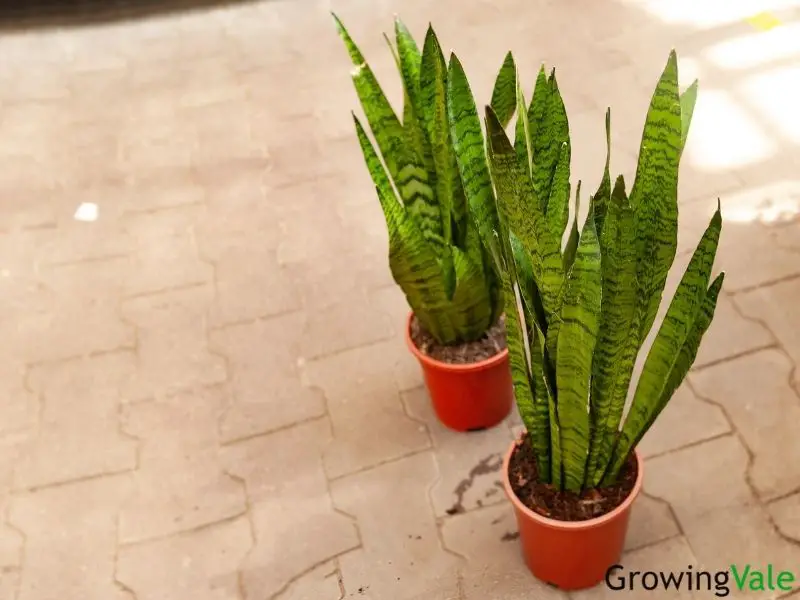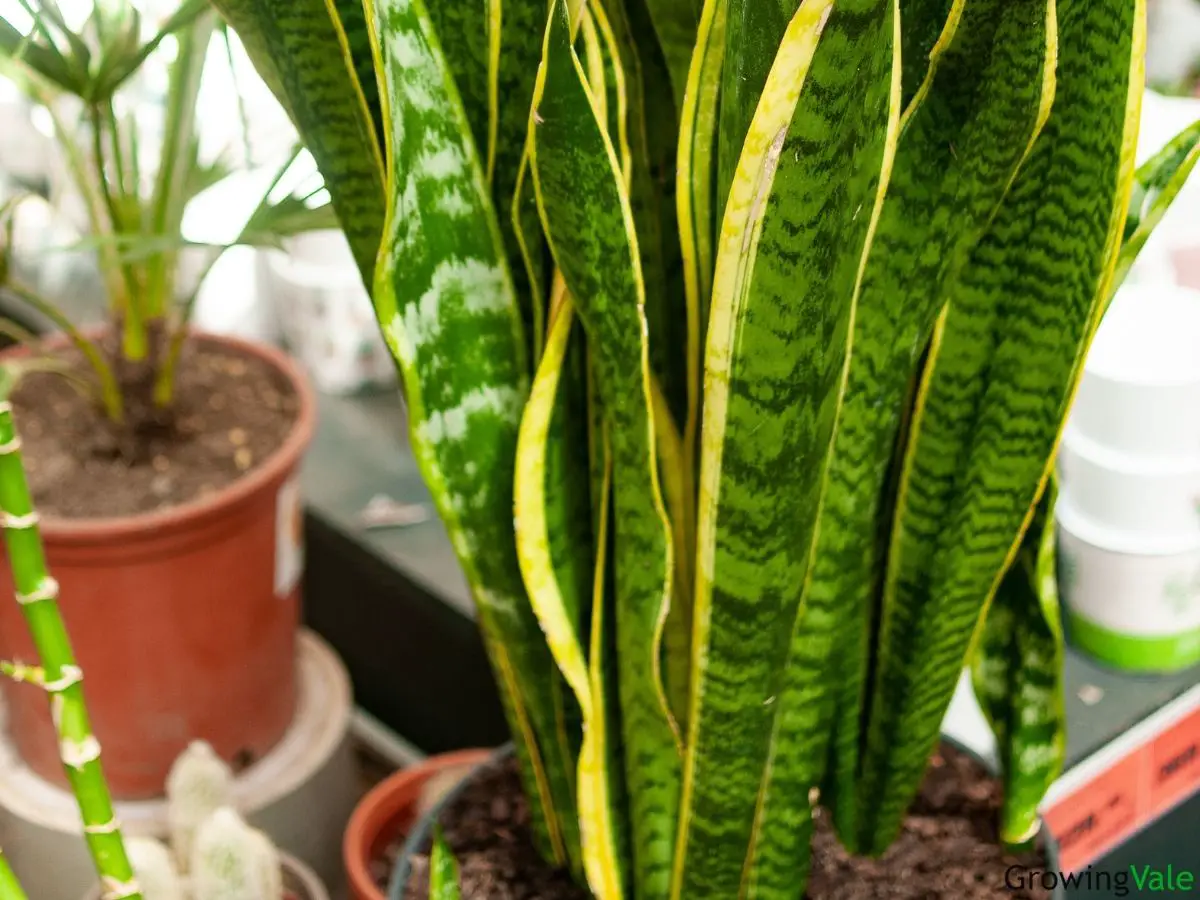How can I make my snake plant grow faster? Besides learning the basics of how to care for a snake plant, there are other things you might do to maximise your plant’s growth.
Does a Snake Plant Need Fertilizer?
The golden rule with fertilizer for snake plants is to not feed them too often. Just once or twice a year is optimal.
It is really important to avoid fertilizing your Sansevieria plant in the winter when the plant has grown dormant. However, it can benefit from some fertilizer, especially when you want it to bloom. This normally occurs in late spring.

Sometimes, your snake plant visually tells you that it could use some help. The leaves may seem to be curling over or you may notice spots, which do not appear intrinsic to the pattern, on the surface.
If your plant appears to have browning or yellowing edges on its leaves, then do not fertilize! This may be a result of overwatering. If this is the case, you will need to inspect the roots for root rot. Consult the information on watering snake plants for instructions on how to address this issue.
Types of Snake Plant Fertilizer
Many succulent growers recommend a 10-10-10 NPK formula. For new gardeners, this refers to the ratio of nutrients present in the fertilizer, namely 10% Nitrogen, 10% Phosphorus, and 10% Potassium. Most fertilizers for Mother-in-law’s Tongue contain these ratios. Low nitrogen is important for succulents, so do not be tempted to use your tomato feed!
You can buy slow-release capsules, which are placed in the soil. These look like little balls, usually held together with resin. They need to be activated by watering, so they should be buried just underneath the soil surface. Every time you water your snake plant, small amounts of nutrients are released. The root ball absorbs these nutrients to help your plant to grow.
The best fertilizer is the soil your plant is growing in. Sometimes, the soil has little deposits of salt and other leftover minerals from the tap water used. Whenever you water your plant, make sure that you completely soak the root ball to flush away any salt deposits.
Homemade Recipes for Mother-in-Law’s Tongue Plant Food
Homemade feeds can be made using your household leftovers.
- Coffee grounds are an excellent source of nutrients for your Sansevieria.
- Some growers swear by carrot pieces. Finely cut up your carrots and allow the slices to soak in water for about 2 days. You can use the vitamin and nutrient-enriched water to hydrate your plant the next time around. Just make sure to strain out the carrot pieces beforehand.
- Gardeners with fish tanks can make use of aquarium water to fertilize their plants. This is a great way to reuse any water that is removed whenever a maintenance water change is conducted.
How often should you fertilize a snake plant?
It is not essential to fertilize these plants regularly. However, if you feed them while they are growing (through spring and summer), then they may respond by producing taller leaves and blooms. Try to feed snake plants once in spring and once more before they go dormant in the winter. Some gardeners prefer to fertilize every month, but those with experience growing succulents know that less is more.
Some growers use liquid fertilizer made for indoor house plants. When used at the recommended levels or concentrations indicated by the label, this may be too rich. It is better to place more importance on the suitability of your soil rather than the nutrients your fertilizer may provide. Unless your Mother-in-law’s Tongue happens to be in season for producing blooms, try not to get too tempted to add fertilizer.
The flowers are a treat and each variety has its own distinct fragrance. You will notice that the flowers remain closed during daylight hours and open up at night. Each flower stalk can produce blooms just once, after which it becomes spent and dies back. If you want to neaten the appearance of your plant, you can cut down the stalk once the flowers have wilted. You can also wait to see if it develops the rare orange berries.
Fertilize your Snake plant if you notice a long, thin stem with buds on it. This will occur in late April or early May. Fertilization will support the plant through its journey of flowering and fruit production. The flowers appear in inflorescences on thin, long stalks. The fertilizer may also supplement the plant’s nutrient stores as it produces orange berries. The fruits add a colorful contrast to the variegated green leaves.
A second feeding late in summer can also be beneficial. It may help the plant build its reserves for winter. Read on to find out how to use household waste to fertilize your D. trifasciata naturally!
Are coffee grounds good for Snake Plants?
Yes. In addition to reducing your household waste, using coffee grounds can help ensure the soil PH is suitable for plants. They also add excellent nutrients to the soil.

